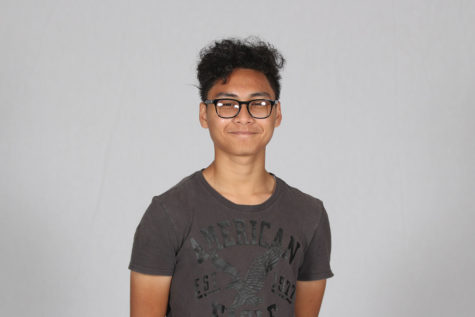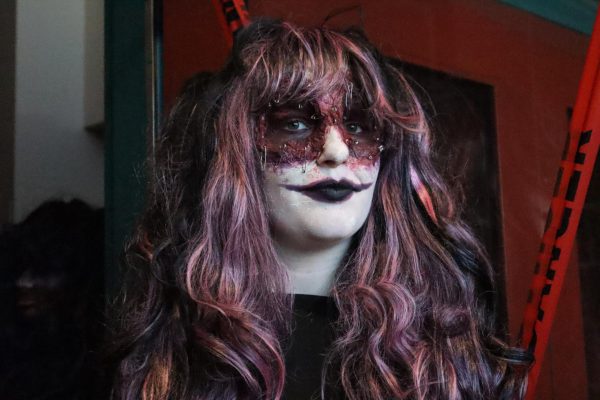Teens struggle with unhealthy relationships
May 4, 2018
One of the many leading causes of teenage relationship breakups is obsessive controlling behavior.
This kind of behavior can develop into something much more malevolent in nature — abuse. Christina Foxhall, a counselor with Expect Respect Austin, said relationships can appear healthy at first, but then turn bad over time.
“In unhealthy relationships, one person uses their power to control or intimidate their partner instead of helping them to feel strong and empowered,” Foxhall said.
The SAFE Alliance along with Expect Respect Austin aims to provide counseling and support groups for victims of violence and abuse.
Abuse is not as simple as an A + B causes C situation. It’s something that builds over time. By its simplest definition, in this context, it is the cruel and violent mistreatment of a person. Violence, in this case, is not necessarily physical. This is where the subject splits.
Abuse is usually portrayed in pop culture in physical, financial, or even a sexual forms; however, those aren’t the only kinds. The Eagle’s Eye interviewed a student who shared his story of abuse to help others know that they are not alone. The student asked to remain anonymous so he will be referred to as Brian.
“(My mentality) was really just in that ‘puppy love’ phase I guess, where you don’t actually care for the person but you always want to be with them because they give you the attention that you want,” Brian said.
“In the beginning, it was like ‘Wow! Maybe this person does care about me,’ and then it just slowly transformed into ‘This person’s just using me for something that they don’t get (receive).’More of like mentally pushing them up. As in, whenever they would be down or something would go their way, they always had me to fall on.”
Verbal and emotional are the most common types of abuse in relationships. In a survey conducted by The Eagle’s Eye, 53 percent of students surveyed experienced this kind of abuse.
“A verbally or emotionally abusive partner uses insults, jealousy, anger, intimidation, threats, or isolation in order to have control over their partner. Sometimes relationships can appear healthy at first, but become unhealthy over time,” Foxhall said.
The effects of this specific type can stretch far longer psychologically and in time than anything physical. With this psychological and emotional form, it can be hard for victims to even figure out that they are experiencing abuse.
“Before when we first started talking, she completely just cut me off randomly and she came right back into my life,” Brian said. “So she would just be like poking me with a stick, in a way. Every time (she would do that) I would look at myself and think ‘What am I doing wrong?’, ‘Did I do something to cause this?”
The subtleness of emotional abuse is the reason why it is so insidious and harmful. One scenario where this happens is when someone in a relationship intentionally start ignoring their partners. Victims will often begin blaming themselves. It might seem like something minor at first but the more it happens, the more degraded victims become.
“I thought she was amazing and perfect,” Brian said. “It wasn’t even love at that point, I was just … I didn’t want to lose this person. I was so emotionally invested into this person that I couldn’t lose them and I guess she saw that and kept just pushing me further and further.”
Emotional abuse comes in a collection of behaviors over time and the behaviors individually don’t seem like anything abusive and that’s why it’s so hard to spot.
“The reason that we stopped talking was because she lied and said that she was scared of me because I didn’t want to talk to her,” Brian said.
“So she went to the police and she got a restraining order saying that I was a monster, and she was scared of me. People actually told me that she had gone and done that to multiple people and she’s a constant liar so it’s just a bunch of emotional (stuff ). That wasn’t the first time she’s done something (though), it’s the first time she did something that bad.”
A common question that victims have is whether it is possible for an abusive partner to change. Foxhall elaborates that violence (emotionally in this case) is always a choice. There are “no excuses” and no one else to blame for being abusive.
“The first step toward becoming a non-abusive partner is to take full responsibility for your actions, without blaming your partner or anyone else,” Foxhall said.
“This means that the abuser must be willing to admit that their behavior is wrong, take responsibility for their actions, and get help to end it.”
The second step would be for the person to actively seek help from a counselor, support group, or trusted adult so that they can explore beliefs and past experiences that have led to abusive behaviors and learn new skills for healthy relationships.
“The abusive partner must make a commitment to themselves to change and respect their partner’s right to be safe and healthy as they work toward change, even if it means ending the relationship,” Foxhall said.
Having a healthy relationship means to grow and find personal development alongside your partner. Couples should learn to communicate effectively and listen attentively but most importantly, create healthy boundaries. Positive relationships consist of trust, mutual respect, honesty, individuality, and understanding







